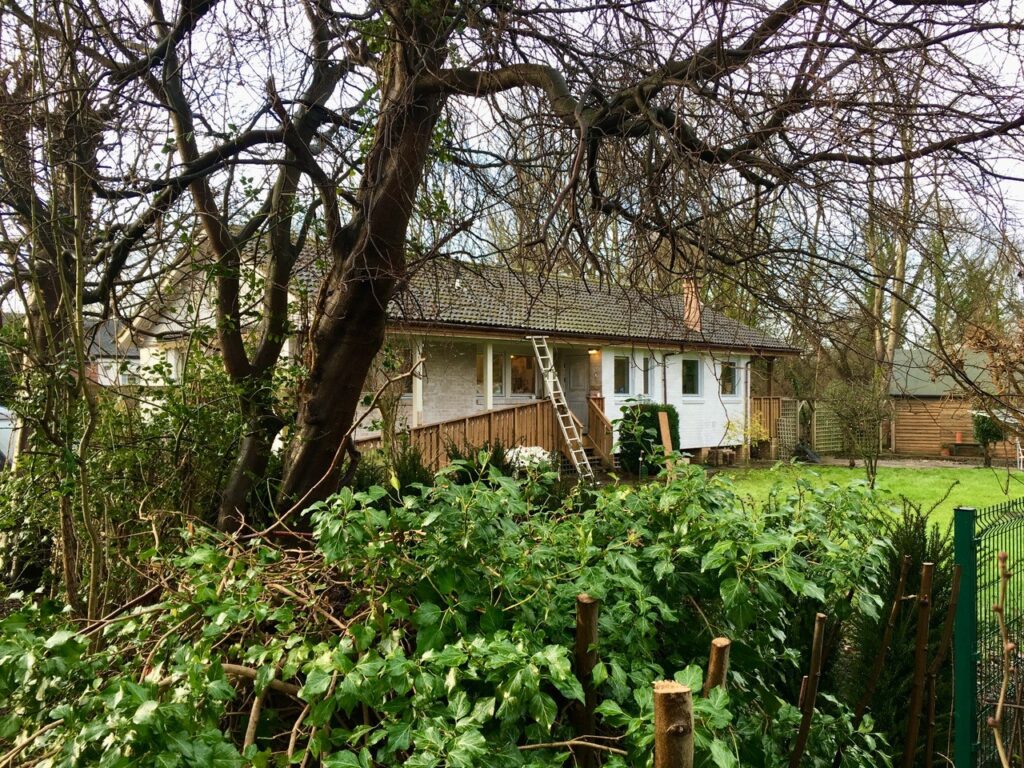By Monica Chard
A book has recently been published which will be of immense interest to residents. Plotlands of Shepperton by Stefan Szczelkun is a charming little book, focusing on the river communities of Shepperton, and a little on Sunbury. It puts into historical and social context how these riverside dwellings came about. Many of them have now been converted to luxury houses but they started out as anything but!
The 1920s saw the arrival of the railways, which opened opportunities for weekend escapes from London to the country. At the same time, it became possible to acquire river-side sites cheaply after the First World War. There were two reasons for this: Many landed estates were broken up when their owners were unable to pay increased death duties. Many of the male heirs to the estates had been killed in the trenches. Secondly, there was a glut of cheap farmland available during the recession during the inter-war depression. As a result, there was a small boom in self-building along the upper Thames. Residents frequently improvised, using whatever materials came to hand, some chose disused railway carriages or buses and some chose to buy chalets either constructed wholly on-site or bought as pre-fabricated flat packs delivered by barge from W.Gardam & Sons at Staines (see below).
The alternative way of life attracted an eclectic mix and engendered a supportive spirit of community, which still exists in these former plotlands by the river. Having lived in a former plotland house myself, I can attest to that. The book takes us on a visit around Hamhaugh Island, Thames Meadow, Sandhills Meadow, The Towpath and looks in at The Creek.
Author Stefan lived in Shepperton in the 50s and 60s. Once he left home to study architecture he realised the significance of the plotland communities he had been brought up within Shepperton. He started studying them in earnest and appreciating their role in our social history. This is your chance to better understand and appreciate our river communities.

